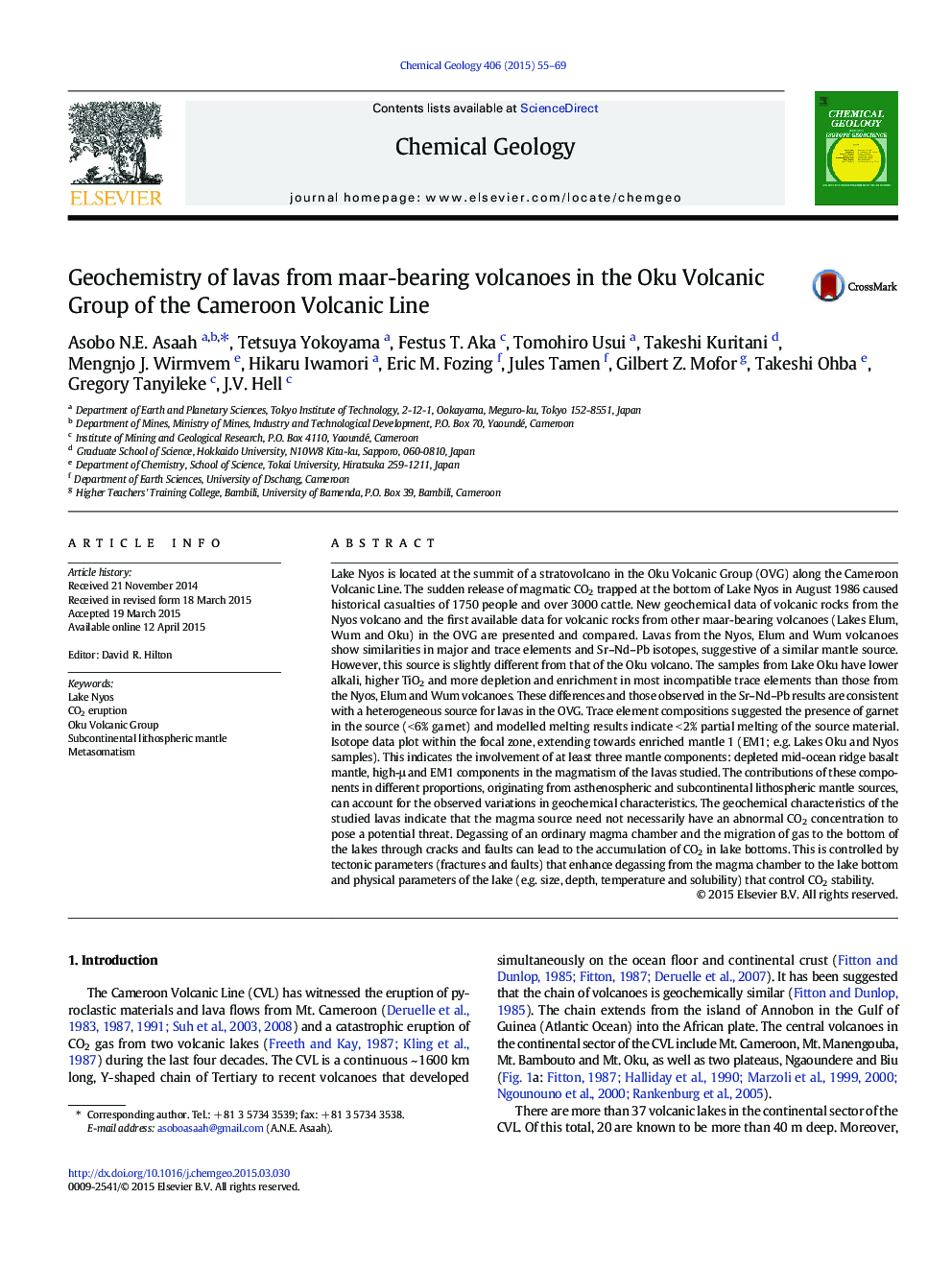| کد مقاله | کد نشریه | سال انتشار | مقاله انگلیسی | نسخه تمام متن |
|---|---|---|---|---|
| 6436407 | 1637567 | 2015 | 15 صفحه PDF | دانلود رایگان |
- Geochemistry of maar bearing volcanoes has been investigated in the Oku Volcanic Group along the CVL.
- Lavas from Lakes Nyos, Elum and Wum suggest similarity in source material and is slightly different from Lake Oku lavas.
- Low degree partial melting (<Â 2%) of a garnet (<Â 6%) bearing lherzolite source mantle
- Contributions of DMM, HIMU and EM1 components from asthenospheric and SCLM sources in different proportions
- CO2 concentration in Lake Nyos is not necessarily due to abnormally high concentration in the source of the primitive magma.
Lake Nyos is located at the summit of a stratovolcano in the Oku Volcanic Group (OVG) along the Cameroon Volcanic Line. The sudden release of magmatic CO2 trapped at the bottom of Lake Nyos in August 1986 caused historical casualties of 1750 people and over 3000 cattle. New geochemical data of volcanic rocks from the Nyos volcano and the first available data for volcanic rocks from other maar-bearing volcanoes (Lakes Elum, Wum and Oku) in the OVG are presented and compared. Lavas from the Nyos, Elum and Wum volcanoes show similarities in major and trace elements and Sr-Nd-Pb isotopes, suggestive of a similar mantle source. However, this source is slightly different from that of the Oku volcano. The samples from Lake Oku have lower alkali, higher TiO2 and more depletion and enrichment in most incompatible trace elements than those from the Nyos, Elum and Wum volcanoes. These differences and those observed in the Sr-Nd-Pb results are consistent with a heterogeneous source for lavas in the OVG. Trace element compositions suggested the presence of garnet in the source (< 6% garnet) and modelled melting results indicate < 2% partial melting of the source material. Isotope data plot within the focal zone, extending towards enriched mantle 1 (EM1; e.g. Lakes Oku and Nyos samples). This indicates the involvement of at least three mantle components: depleted mid-ocean ridge basalt mantle, high-μ and EM1 components in the magmatism of the lavas studied. The contributions of these components in different proportions, originating from asthenospheric and subcontinental lithospheric mantle sources, can account for the observed variations in geochemical characteristics. The geochemical characteristics of the studied lavas indicate that the magma source need not necessarily have an abnormal CO2 concentration to pose a potential threat. Degassing of an ordinary magma chamber and the migration of gas to the bottom of the lakes through cracks and faults can lead to the accumulation of CO2 in lake bottoms. This is controlled by tectonic parameters (fractures and faults) that enhance degassing from the magma chamber to the lake bottom and physical parameters of the lake (e.g. size, depth, temperature and solubility) that control CO2 stability.
Journal: Chemical Geology - Volume 406, 16 June 2015, Pages 55-69
